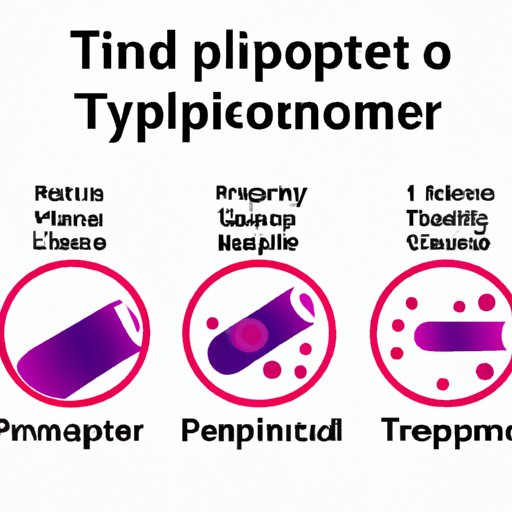
Introduction
Idiopathic thrombocytopenic purpura, or ITP, is a blood disorder in which the immune system mistakenly destroys platelets, which are crucial for blood clotting. It is estimated that ITP affects around 3 in 100,000 adults per year in the United States alone. This article aims to provide readers with a comprehensive guide to ITP, from understanding the disease and its symptoms to treatment options and scientific discoveries.
Understanding ITP: A Comprehensive Guide to Idiopathic Thrombocytopenic Purpura
ITP is a rare disorder where the immune system attacks platelets, causing low platelet counts and bleeding. It is most commonly found in adults, usually young women less than 40 years of age. There are two types of ITP: acute, which is temporary, and chronic, which lasts for six months or more. Symptoms of ITP may include bruising, petechiae (small red dots on the skin), bleeding from the gums or nose, and fatigue. Diagnosis of ITP is typically made through a blood test that measures platelet counts. By understanding the disease and its symptoms, patients and their families can better manage ITP and its associated symptoms.
Living with ITP: Personal Stories and Insights from Patients and Caregivers
ITP can be a challenging condition to live with, affecting not just patients but also their caregivers and families. Personal stories from those affected by ITP can provide valuable insights into the emotional toll of living with the condition. Patients may feel anxious or depressed due to the unpredictability of the disease, while caregivers may feel overwhelmed by the responsibility of helping their loved ones manage their symptoms. Hearing firsthand accounts from others who have experienced the same challenges can provide comfort and support, helping patients and their families feel less alone in their journey with ITP.
ITP Treatment Options: Exploring Different Approaches to Manage Low Platelet Counts
There are several ways to manage ITP and its associated symptoms, including medication, lifestyle changes, and surgical intervention. Each treatment option has its own set of pros and cons; for example, some medications may cause unwanted side effects, while lifestyle changes such as dietary modifications and avoiding certain activities may be impractical or limiting. Treatment will vary depending on the type and severity of ITP, as well as the patient’s individual needs and lifestyle. However, with careful management and the help of a healthcare provider, people with ITP can live full and active lives.
The Science behind ITP: What We Know and What We Still Need to Discover
Despite significant progress in understanding ITP and its causes, much more research is needed to develop better treatments and a potential cure. Scientists have identified several genes and proteins that may play a role in ITP, and ongoing studies are exploring new therapeutic targets. By staying abreast of the latest developments in ITP research, patients and caregivers can be better informed about advances in care options and potential new treatments.
ITP in Children: Identifying Symptoms, Diagnosing, and Treating the Disease in Pediatric Patients
ITP affects people of all ages, including children. However, the course of the disease, its presentation, and treatment options often differ in pediatric patients. Parents of children with ITP should be aware of the symptoms of the disease, which can include bleeding, bruising, and fatigue. A thorough diagnostic workup is necessary to confirm a diagnosis of ITP in children, and management typically involves medication and regular monitoring. As with adults, early diagnosis and careful management can help children with ITP lead healthy and fulfilling lives.
Conclusion
Living with ITP can be challenging, but by understanding the disease, seeking out support, and staying informed about new developments in care and treatment, patients and their families can manage its symptoms and enjoy an active lifestyle. For those seeking more information about ITP or seeking support, there are numerous organizations and resources available, such as the Platelet Disorder Support Association and the National Heart, Lung, and Blood Institute. With the right management and support, people with ITP can lead happy, healthy lives.




